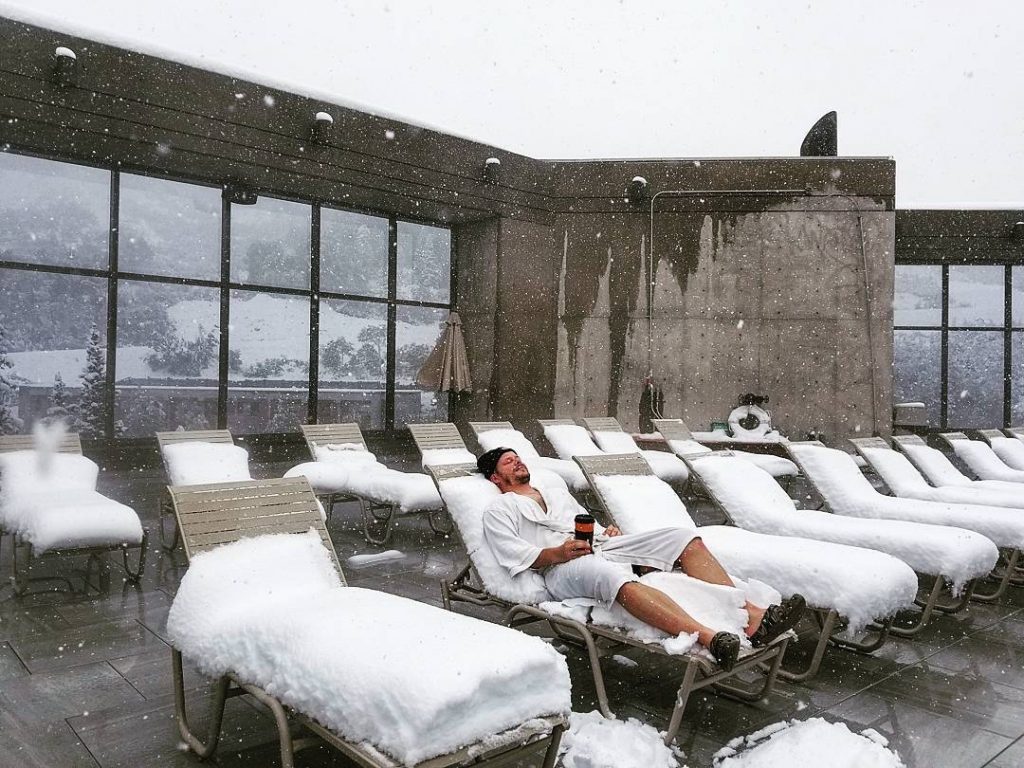
There are some small, but important, details about the ThermaPANEL system that makes it unique. Careful engineering and design went into making ThermaPANEL not only extremely capable but versatile and easy to install.
Basics:
ThermaPANEL is a modular hydronic heat exchange system. Each ThermaPANEL unit is a 24″x24″ square plastic panel, but panels are factory connected to make custom length rows based on the project dimensions. Rows of ThermaPANEL can be as long as 25 panels, or 50 feet. The panels are made of a special PE-RT (Polyethylene of Raised Temperature) plastic which allows us to use fusion welding technology. By using tubing of the same plastic, we are able to heat up both the panel inlets and tubing and fuse them together to create a seamless bond. Essentially, we are taking two separate pieces of plastic and fusing them together to create a single piece of plastic, which means no joints, fittings, or leaks.
To prevent heat back loss, each panel is insulated using 1″ of EPS foam in varying densities. The density of the foam depends on the specific project and application. Rows of panels are assembled according to a custom-drawn plan created by our engineers based on an architectural or site plan. Once assembled, the panels are loaded into boxes, along with other supplied mechanical components, and shipped to the installer or site.
Mechanical Components:
To keep things in line with industry standards, our system uses 1/2″ inner diameter tubing. This allows the use of standard mechanical fittings and connectors. The only mechanical connections that need to be made on-site are from either the ends of the row back to the manifold or connecting rows in sequence. These connections can be made with standard 1/2″ crimp, compress, quick connect, or socket fusion fittings.
Therma-HEXX engineers provide load specifications and even model numbers for the circulator, manifolds, boiler, and/or heat exchanger size. We also supply many of the components to make it easier for the installing contractor. The sizing of these components is based on the performance needs of the system and the corresponding panel layout.
Installation:
We have designed ThermaPANEL to be reasonably straightforward to install. For new customers, we require onsite installation training. This serves two purposes: to guarantee a proper installation, and to certify the installing contractor.
ThermaPANEL systems arrive packaged and labeled based on the project plans. Prior to installation, boxes should be staged near the final installation location. For a pedestal-mounted system, the ThermaPANEL installer will work in concert with the pedestal and paver installer. A row of pedestals will be set, then the row of corresponding panels will be set. The paver installer will then follow that with pavers while the ThermaPANEL installer runs tubing and makes connections. This should repeat until the project is finished.
For on-grade systems, the base should be prepared according to plan specifications. Panel rows will be placed in the correct layout as determined by the provided plans. Once all panels are installed and connections are made the bedding material and pavers can be installed.
Systems should always be pressure tested after the manifold is connected.
For more specific installation instructions, download our product brochure, or contact us and we can answer your specific questions.
Maintenance and Troubleshooting:
After a system is installed it needs to be dialed in for performance. In some instances, balancing at the manifold may be required. Every system should have a specified performance level that establishes the flow rate of each row, fluid temperature, as well as send and return system pressure. The system should be dialed in according to the specifications.
It is important to check the system after the first snowfall. If it is the first time a system operates, performance may suffer while any air in the system works its way out. It may be necessary to run the system manually to help work the air out. The glycol feeder may feed a fair amount of glycol into the system during this process, so keep an eye out and refill it if necessary.
Another common problem is the control scheme of the snowmelt controller. If the sensor is in a location that melts before another section of the system, it could turn off before that area finishes melting. The controls can be adjusted to keep the system running for a period of time even after the sensor determines it is time to shut off.
If it is determined that the system is losing pressure and glycol due to a leak, take the following steps to determine its origin:
- Isolate the system and verify that the mechanical portion is not leaking.
- Access the manifold(s) and check for loose fittings and/or valves
- Open the system and isolate manifolds to determine which zone is losing pressure.
- Once the leaking zone is identified, isolate rows to determine faulty panel row.
- Pull up corresponding pavers and do a visual inspection for glycol.
- Replace the faulty panel.
- Run the system to confirm the leak is repaired.
- Replace pavers.
Keeping up with regular maintenance is simple with a ThermaPANEL system, and will add many years of trouble-free use. The main focus is on glycol level and potency. The glycol tank should be around 3/4 full at all times, this allows for makeup from slight losses and room for expansion. The potency of the glycol should also be checked periodically, per the glycol supplier’s specifications.
Contact us with any questions about troubleshooting or system maintenance and repair.
